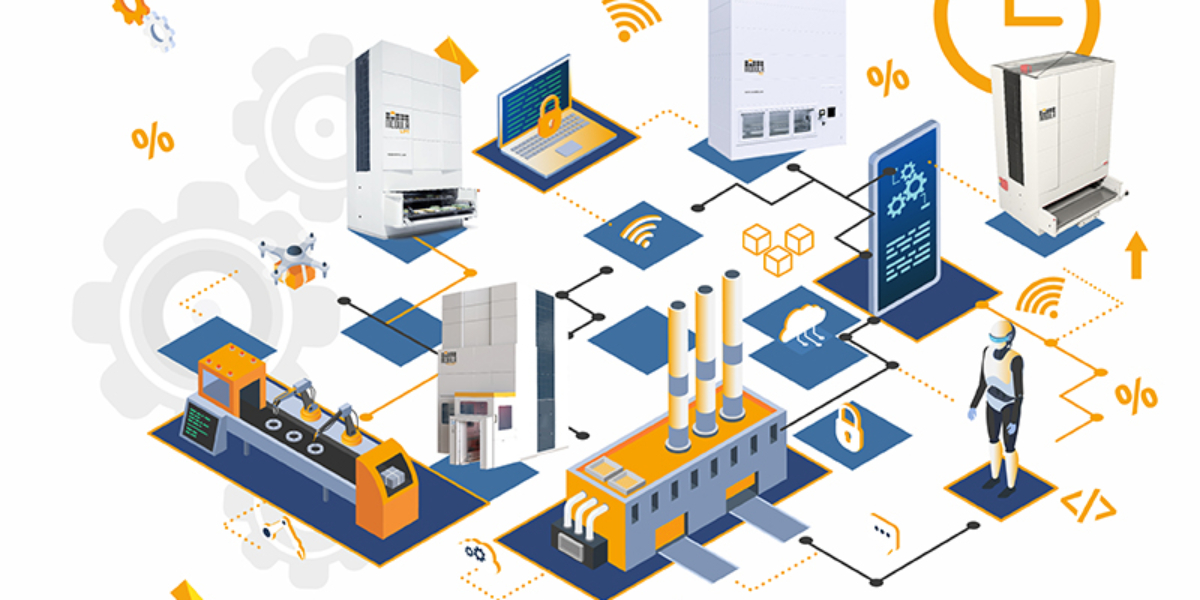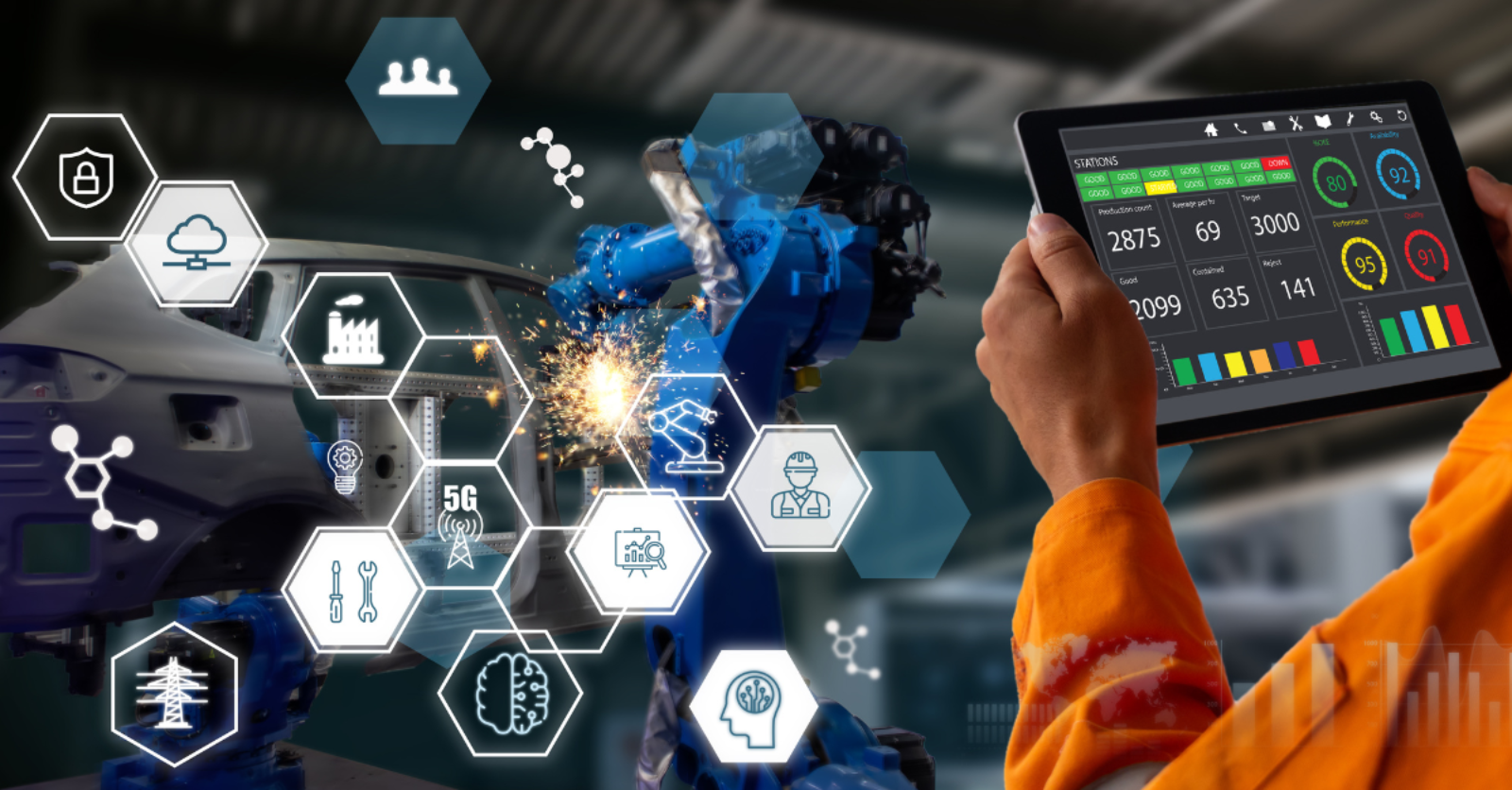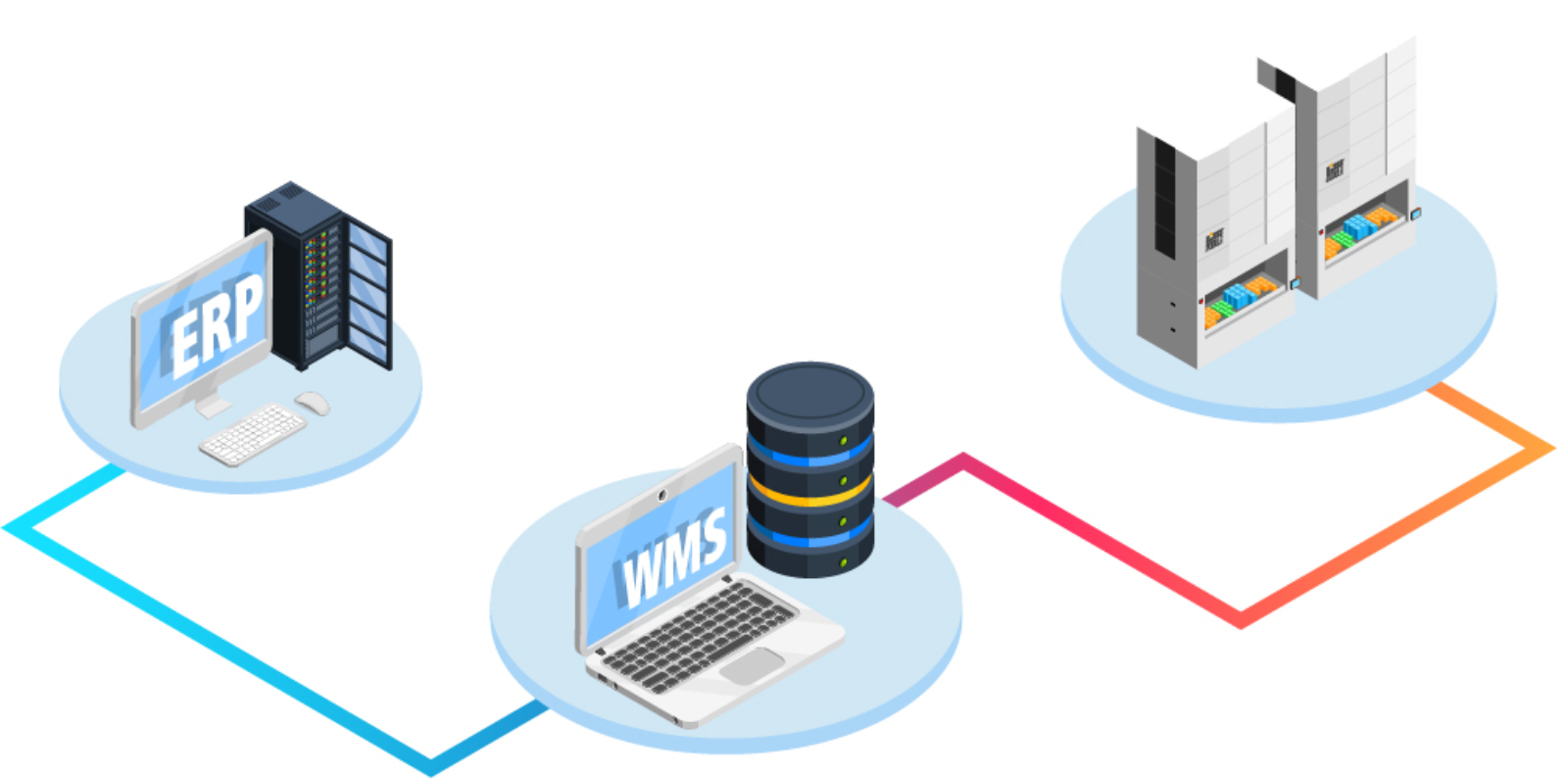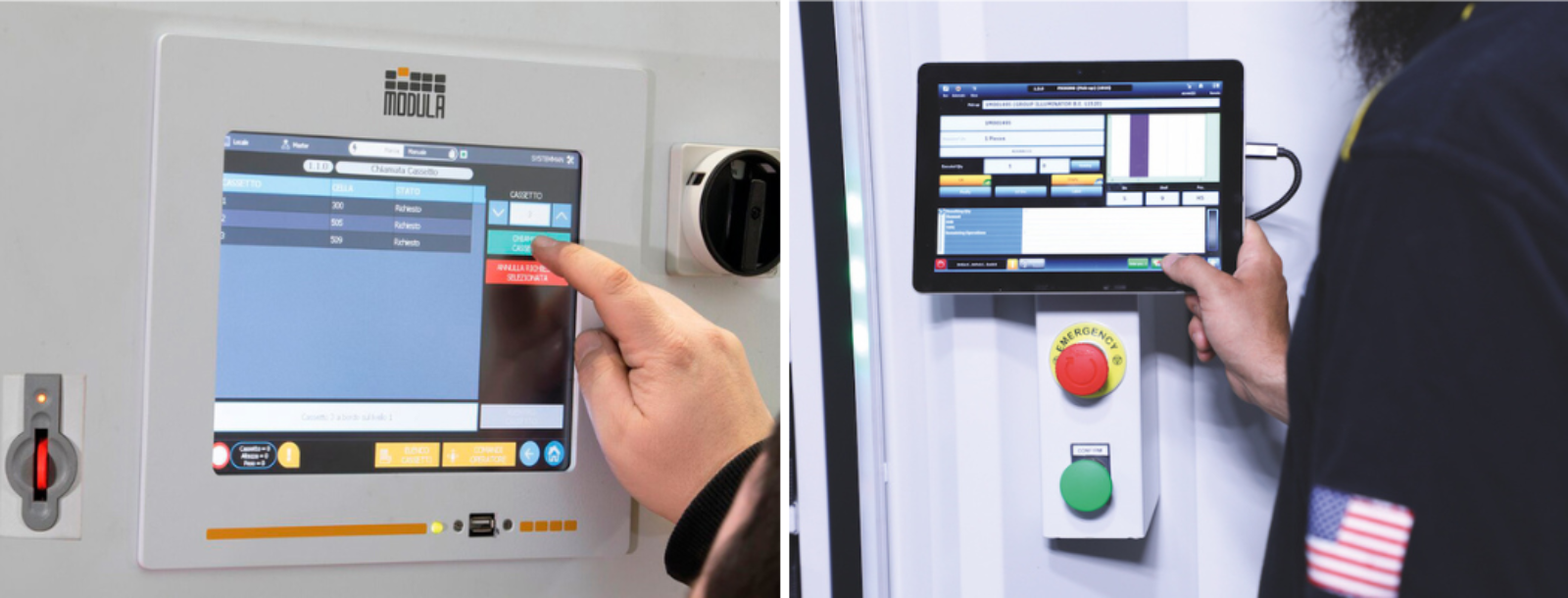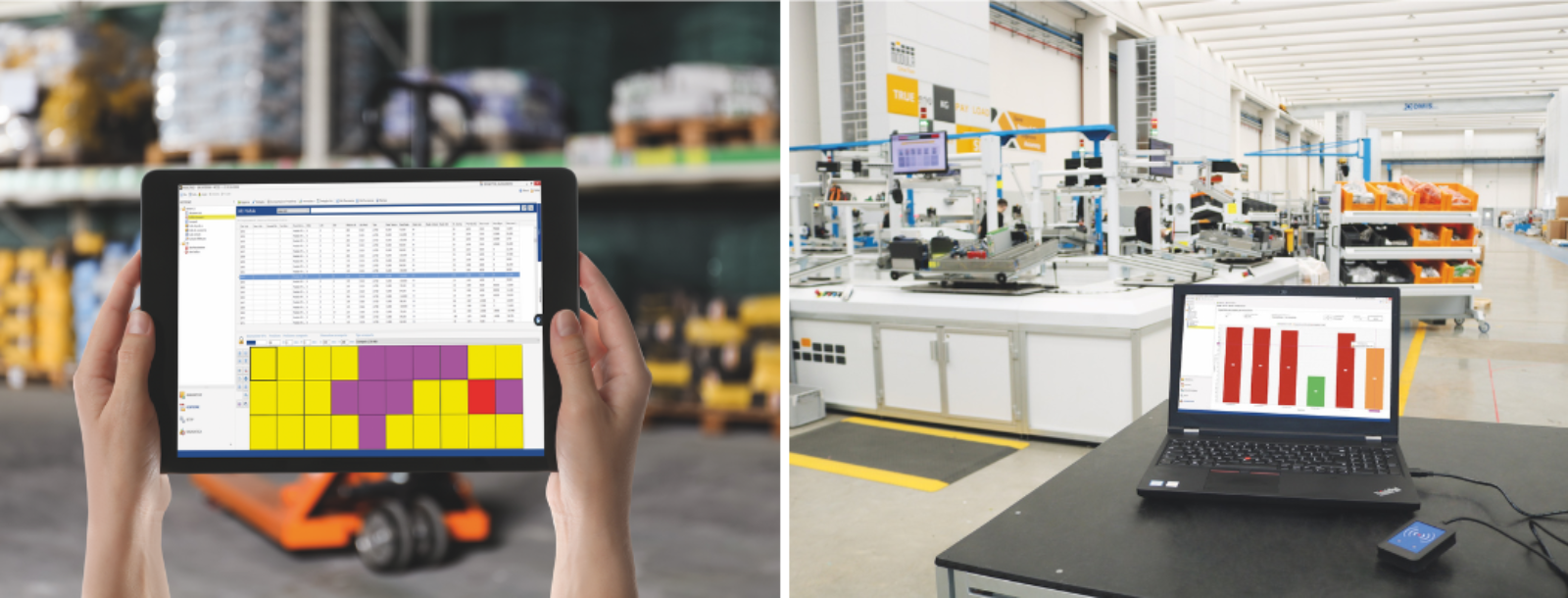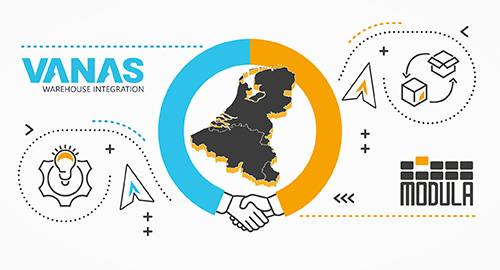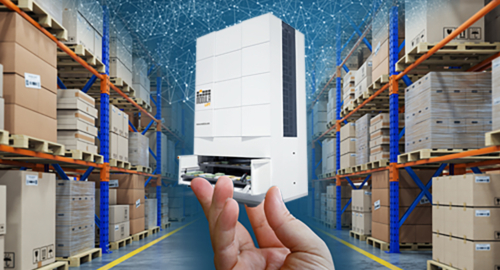Manufacturers worldwide are facing significant challenges as industries rapidly digitize and automate towards Smart Factory Industry 4.0 operations.
However, despite the proliferation of robotics and interconnected processes, many manufacturing aspects have only partially embraced Industry 4.0 initiatives.
A crucial element of the Smart Factory is the exchange of data between production and distribution processes, facilitated by Ethernet and the cloud-based Industrial Internet of Things (IIoT).
This enables the collection of a higher volume of data from multiple processes, available in a common format for broader usage and analytics.
To meet the challenges of modern manufacturing, Smart Factory solutions are becoming essential.
The urgent need for smart factory solutions
Supply chain executives across various industries must balance production runs, inventory volumes, and delivery schedules efficiently.
In pursuit of higher efficiency, reduced energy consumption, and cost optimization, manufacturers are closely evaluating their manufacturing and distribution models. Smart Factory connectivity offers an optimal solution to address these challenges.
The fundamental aspect of the Smart Factory is the exchange of data between production and distribution processes
Optimizing Small-Piece Storage and Fulfillment with Smart Factory Solutions
In today’s Smart Factory warehouse, the heart of efficient operations lies in the automated storage, picking, and fulfillment of small-piece items and finished goods. Whether it’s handling finished goods, replacement parts, retail e-commerce micro-fulfillment, tool cribs, or kitting for assembly, an automated storage and picking system for small-piece order fulfillment is essential.
Vertical lift modules (VLMs) and horizontal carousels (HCs) exemplify the ideal system for this purpose. They are capable of managing thousands of different SKUs, allowing small-piece inventory to be stored, picked, and packed within a small footprint with impressive speed and efficiency.
The unique capability of VLMs and HCs to store inventory in a compact space leads to a significant reduction in conventional inventory storage size, up to 90%. This allows facilities to save valuable floor space and concentrate operations in a smaller footprint, closer to where they are needed. As a result, the flow of operations is optimized, and the need for off-site storage can be minimized or eliminated.
The modular and scalable design of VLMs and HCs enables them to function effectively in various environments, including both high-ceiling and low-ceiling facilities with unusual configurations. These systems can easily adapt to changes in SKU counts and throughput volumes. Moreover, they can accommodate the storage of both ambient and temperature-controlled products within the range of 2°C and 25°C.
VLMs leverage the available room height, allowing items to be stored up to 16 metres high within a confined footprint, effectively maximizing the use of vertical space in the facility. On the other hand, the Modula HC is designed for use in environments with limited ceiling height.
While VLMs and HCs have already proven their effectiveness in enhancing storage and fulfillment efficiency, the latest evolution of these solutions takes things further. They now offer a higher level of integration and connectivity, fully supporting Smart Factory operations. Companies like Modula are at the forefront of manufacturing such advanced automated storage and retrieval systems.
By embracing these Smart Factory solutions, manufacturers can optimize small-piece storage and fulfillment processes, leading to increased efficiency, reduced operational costs, and improved overall productivity in their warehouses.
WMS Connectivity: Enhancing Smart Factory Operations
As the backbone of managing VLMs and HCs, a dedicated and comprehensive warehouse management system (WMS) is the most ideal solution, specifically designed for receiving, picking, and organizing small-piece fulfillment.
VLMs and HCs offer complete Ethernet connectivity with the plant WMS and house ERP.
The Modula WMS, for instance, is a robust inventory management software specially tailored to operate VLMs and HCs while seamlessly integrating with traditional manual warehouse inventory in static racking.
A key feature of this WMS is its real-time integration with the facility’s host WMS via Ethernet. This ensures that the host WMS has updated information about the location of every item to be picked or refilled. The VLM and HC’s WMS interface supports various WMS, DMS, MRP, and ERP platforms, enabling faster and more accurate processes like receiving, picking, and putting away products. Additionally, the VLM and HC WMS allows the host WMS to directly monitor the VLM and HC units.
Each VLM and HC is equipped with a color touchscreen console called Copilot, connected to Modula WMS via Ethernet. This user-friendly interface simplifies operations, enabling operators to request specific items or execute orders seamlessly.
Each VLM and HC is equipped with a color touchscreen Copilot console, connected to Modula WMS via Ethernet
The graphical visualization of the tray layout on the Copilot provides clear information about the location of desired items within the VLM or HC. It also displays all relevant information related to picking or refilling operations, such as item codes, quantities, and item notes.
The dedicated and connected WMS for small-piece inventory storage and picking with VLMs and HCs offers several inherent benefits, including:
- Elimination of Manual Input
By utilizing barcodes and other automated solutions with VLMs and HCs, the WMS reduces the risk of human errors associated with manual input. - Inventory in Racking
Many warehouses use sophisticated MHE and WMS but still handle thousands of SKUs manually with shelving, drawers, and tool cribs. A dedicated WMS for small-piece inventory can integrate data from static shelving digitally with VLMs and HCs via Ethernet, streamlining management and reporting. - Insight-Driven Dashboard
The WMS offers personalized views and real-time visibility into key performance metrics through customizable layouts, alerts, and custom reports. This empowers managers to make data-driven decisions to optimize warehouse operations. - Track and Trace Unique IDs
As the need for tracking unique IDs grows, especially for high-value smaller-item products, the latest VLM and HC WMS support this requirement. They enable efficient digital management of inventory for track and trace capabilities and seamless data sharing with the host WMS and management through Ethernet connectivity. - Fast Installation and Connectivity
Unlike many traditional WMS requiring lengthy installations, the latest WMS, like the Modula WMS, provides a rapid installation process. It comes with standard interfaces for seamless integration with the company’s ERP, enabling quick and secure order and inventory management via Ethernet.
By leveraging WMS connectivity and the capabilities of VLMs and HCs, companies can significantly improve the efficiency and productivity of their Smart Factory operations, enabling them to stay competitive in today’s fast-paced manufacturing landscape.
Graphical display of tray layout clearly shows the operator where the desired item is located in the warehouse.
Cloud-based Remote Reporting: Revolutionizing Smart Factory Operations
The latest Vertical Lift Modules (VLMs) and Horizontal Carousels (HCs) boast a unique capability in the form of real-time system performance and metrics reporting through Industrial Internet of Things (IIoT) cloud connectivity.
This powerful feature is exemplified in Modula Cloud, a remote analytics and reporting platform that gathers statistical data from every automated storage and retrieval unit, regardless of its location.
Modula Cloud collects and analyzes data from each VLM and HC unit, automatically transmitting the information to a secure cloud platform accessible through advanced user authentication. Users can access the data from individual VLMs or HCs or multiple units across various locations via their personalized portal, accessible from any device and location.
The platform includes an interactive map that allows users to track the operating status of VLMs or HCs. With a simple click on the map, users can access real-time performance reports for each individual unit.
Key reporting and capabilities of Modula Cloud include:
Performance Metrics
Modula Cloud continuously tracks information and activities from warehouses, even in multiple systems across various cities and countries. This data encompasses the total number of missions, missions per day or period, tray saturation, throughput cycles, and warehouse status (online/offline). Detailed reports reveal how efficiently a machine’s trays are utilized, tray statuses, cycle count, energy consumption, and other critical data.
Maintenance
Operators receive immediate notifications if a machine is running smoothly, offline, or experiencing issues requiring attention.
Leveraging software, algorithms, and data from IIoT sensors, VLMs and HCs can self-report on their servicing needs. The platform analyzes data from each unit, generating optimal maintenance schedules and assessing when interventions are necessary.
Custom dashboards, alarms, and predictive notifications provide remote monitoring for critical information and can automatically generate work orders associated with maintenance activities.
Data Accessibility and Security
Performance and metrics data from VLMs and HCs is collected and uploaded to the cloud through a secure communication protocol. Access to this data is limited to authorized users with unique usernames and passwords.
To ensure data security, Modula Cloud was developed using Microsoft technology and hosted on the Microsoft Azure cloud platform, which adheres to the latest safety certifications for information management and cryptography systems for authentication and data exchange. The only requirement for clients on the IT side is a stable and continuous internet connection from the Modula Server PC workstation.
In essence, this cloud-based diagnostic and reporting system provides complete real-time visibility into every aspect of VLMs’ and HCs’ operation. Modula Cloud empowers users to monitor their warehouses regardless of their physical location.
Modula Cloud allows you to monitor your warehouse, regardless of where you are
Embracing Industry 4.0 and Smart Factory Solutions
Implementing a Smart Factory initiative is aimed at achieving the highest level of production efficiency.
To achieve this, manufacturers must develop individually tailored and comprehensive intralogistics solutions that prioritize security and flexibility, propelling them confidently into their digital future.
A critical aspect of this evolution is harnessing interconnected automation solutions across multiple distribution processes, enabling a seamless production flow. Central to this transformation is the integration of VLMs and HCs for automated small-piece fulfillment, revolutionizing the efficiency and productivity of Smart Factory operations.
Want to know more?

